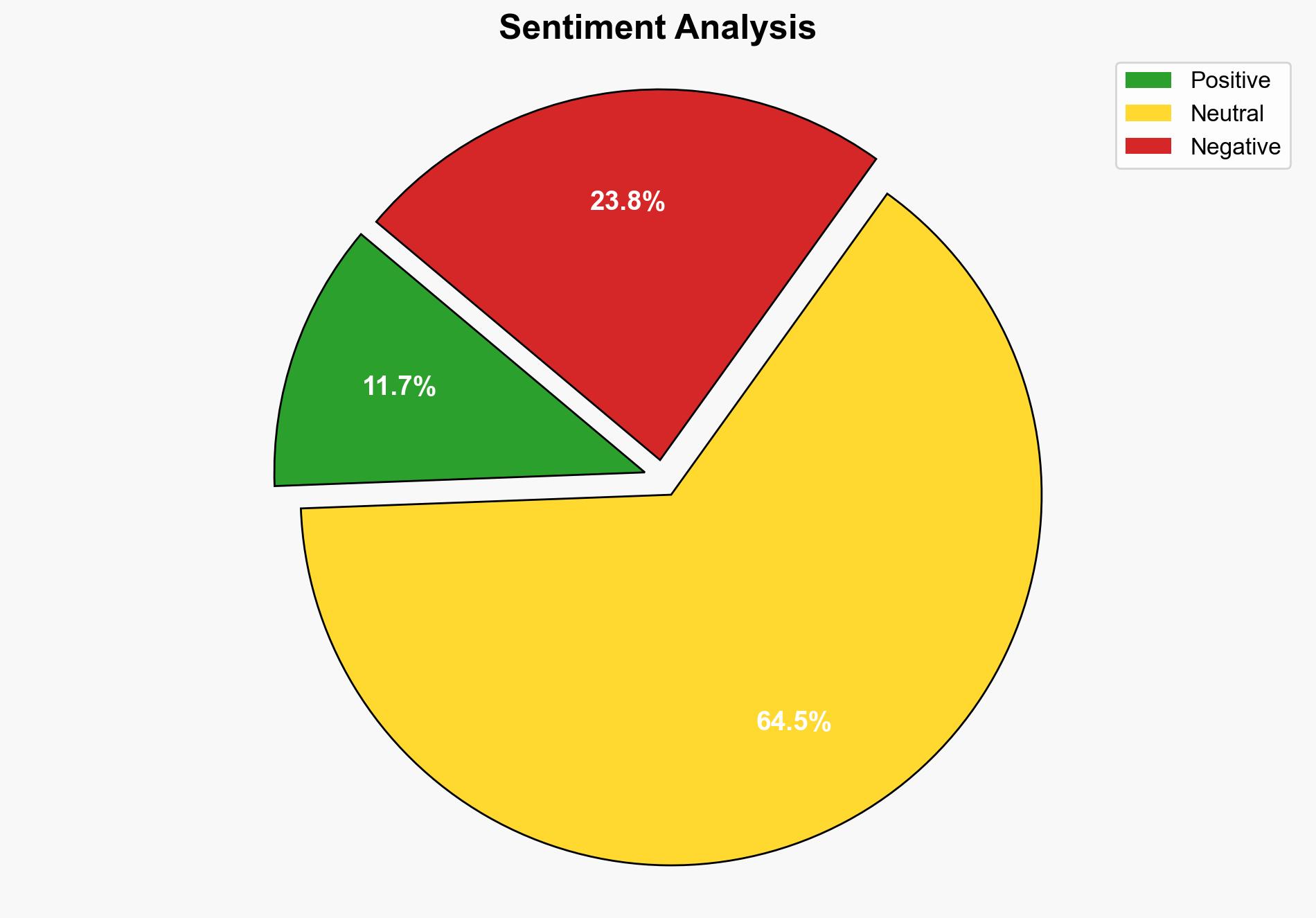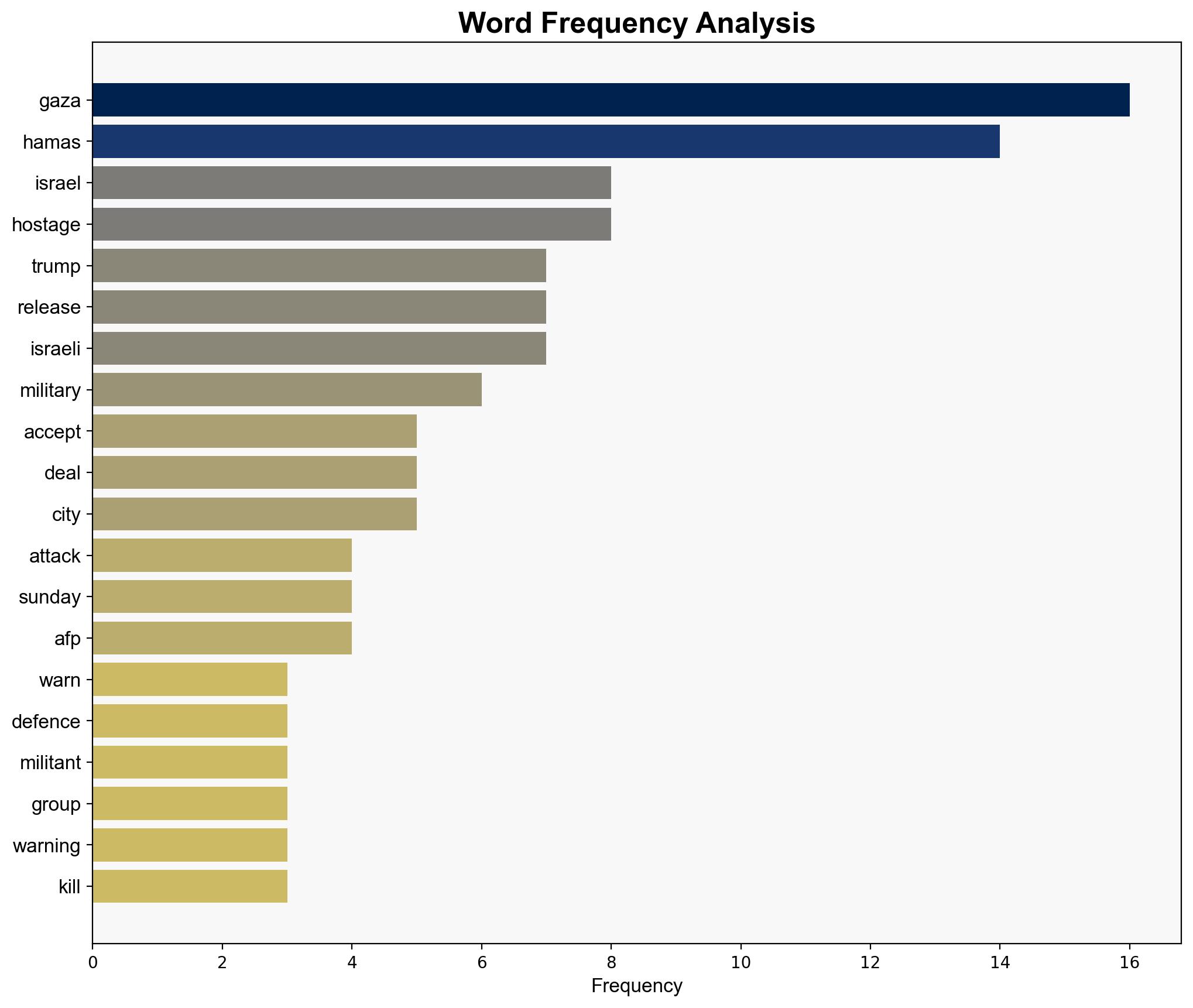Israel Warns Hamas To Surrender Or Face ‘Annihilation’ – International Business Times
Published on: 2025-09-08
Intelligence Report: Israel Warns Hamas To Surrender Or Face ‘Annihilation’ – International Business Times
1. BLUF (Bottom Line Up Front)
The situation between Israel and Hamas is at a critical juncture, with Israel issuing a stern ultimatum to Hamas. The most supported hypothesis is that Israel is leveraging a combination of military pressure and diplomatic channels to force Hamas into negotiations. Confidence level: Moderate. Recommended action: Monitor developments closely, particularly any shifts in Hamas’s stance or international diplomatic interventions.
2. Competing Hypotheses
1. **Hypothesis A**: Israel’s ultimatum is primarily a psychological operation aimed at pressuring Hamas into surrendering or negotiating under duress, without an immediate intention to escalate to full-scale military action.
2. **Hypothesis B**: Israel is genuinely preparing for a significant military escalation to decisively defeat Hamas, using the ultimatum as a final warning before launching a comprehensive offensive.
Using ACH 2.0, Hypothesis A is better supported due to the presence of ongoing diplomatic efforts and the historical pattern of using threats to bring parties to the negotiating table. Hypothesis B remains plausible given the military buildup and rhetoric but lacks the same level of supporting evidence.
3. Key Assumptions and Red Flags
– **Assumptions**: It is assumed that Hamas is rational and will respond to pressure by negotiating. Another assumption is that international actors, including the U.S., will influence Hamas’s decision-making.
– **Red Flags**: The lack of independent verification of casualty figures and the potential for misinformation from both sides. The possibility of misinterpretation of intentions by either party could lead to unintended escalation.
– **Blind Spots**: The internal dynamics within Hamas and the influence of other regional actors are not fully understood, which could affect the outcome.
4. Implications and Strategic Risks
– **Escalation Risk**: A miscalculation by either side could lead to a broader conflict, drawing in regional actors and destabilizing the region.
– **Economic Impact**: Prolonged conflict could disrupt regional trade and impact global markets, particularly if key shipping routes are affected.
– **Geopolitical Dynamics**: The involvement of international players like the U.S. and potential mediation by other countries could shift alliances and influence future negotiations.
– **Psychological Impact**: Continued conflict may exacerbate humanitarian crises, affecting public opinion and increasing pressure on governments to act.
5. Recommendations and Outlook
- Encourage diplomatic engagement by leveraging international partners to mediate and offer incentives for de-escalation.
- Prepare for potential humanitarian aid requirements in case of escalation.
- Scenario Projections:
- Best Case: Successful negotiations lead to a ceasefire and gradual de-escalation.
- Worst Case: Full-scale military conflict with significant casualties and regional destabilization.
- Most Likely: Continued skirmishes with intermittent diplomatic efforts, leading to a temporary ceasefire.
6. Key Individuals and Entities
– **Israel Katz**: Israeli Defense Minister, key figure in issuing the ultimatum.
– **Donald Trump**: Former U.S. President, involved in diplomatic efforts.
– **Steve Witkoff**: White House envoy, involved in proposing a new ceasefire deal.
7. Thematic Tags
national security threats, counter-terrorism, regional focus, geopolitical strategy




